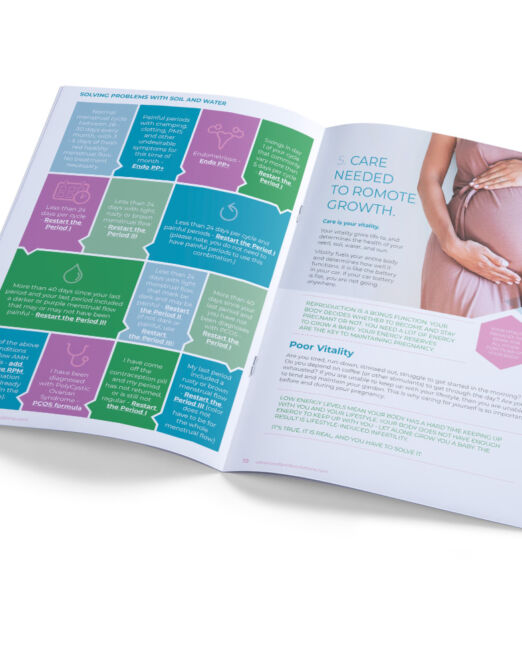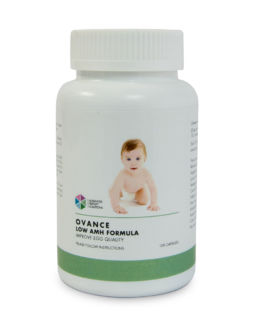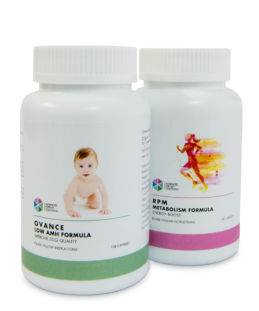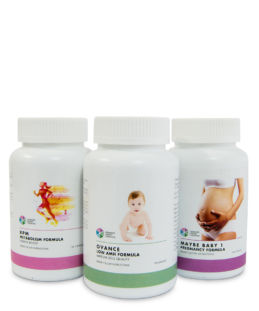This post is also available in: العربية Español
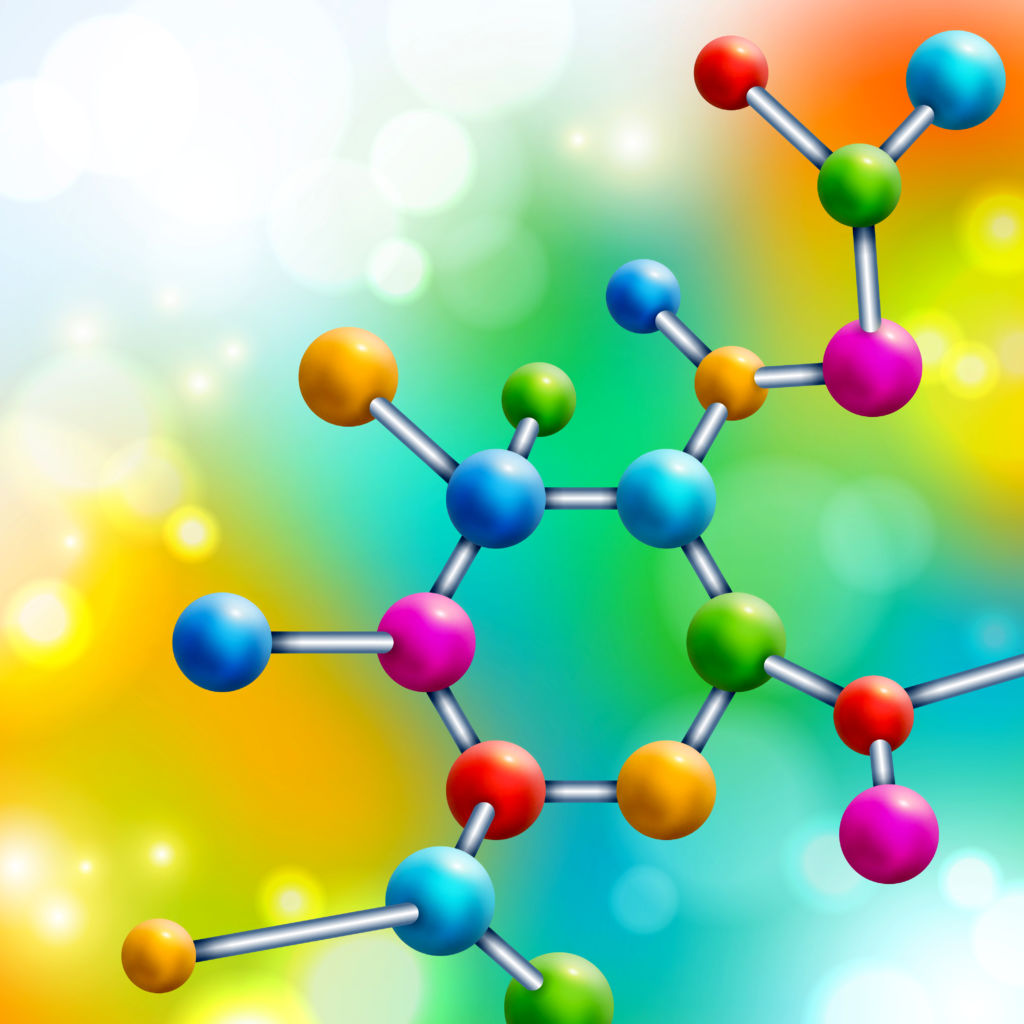
Anti-Mullerian Hormone (AMH) does the following things:
- Begins the growth cycle of the eggs in your ovaries. AMH turns Primordial egg follicles into Secondary egg follicles.
- Organizes how many eggs your ovaries can grow every month. 15 – 20 eggs in each ovary per month is normal.
- Creates the overall quality of the eggs you can ovulate. Good AMH levels give your eggs their best start in life.
- Determines if your eggs will fertilize and turn into a baby. You need healthy AMH levels to start growing a baby.
LOW AMH LEVELS DO THE FOLLOWING THINGS:
- Prevent your ovaries from growing a normal amount of eggs. This is referred to as Diminished Ovarian Reserve.
- Stops you from ovulating fertilizable eggs. Without proper AMH levels, your eggs may not fertilize.
- Ruin your best efforts to have a baby. If you are lucky and do fall pregnant, miscarriages are high.
- Makes the best IVF treatments fail miserably. Women with low AMH have the lowest success rate using IVF.
- Are the underlying cause of most pregnancy issues in women over 40.
AMH or Anti-Mullerian Hormone is the hormone that starts the growth of an egg in your ovaries. AMH is what turns the egg from a primordial, baby egg follicle into a secondary, teenage egg follicle. Once your teenage egg follicle gets large enough, about 2 mm or so in size, Follicular Stimulating Hormone (FSH) takes over finishing the egg ready to be ovulated.
Low AMH is where there is not enough of this hormone to grow the normal amount of eggs in your ovaries. The normal amount of eggs a woman grows each month is around 15 – 20 in each ovary. If you are growing much less than that, your AMH levels are to blame. The fewer eggs you grow in your ovaries each month appears to lower the quality of the egg you will eventually ovulate.
If you do not have enough AMH growing your eggs, your ovulated egg is poor quality and is unlikely to turn into a baby. We know this because women with low AMH tend not to fall pregnant. Whether naturally or using IVF, low AMH eggs may begin to fertilize, but don’t grow much further and most of the time, do not turn into a baby. There are always exceptions though, yet no-one has a good answer to why.
Low AMH levels present the most challenging problems to mothers and IVF doctors wanting to make babies.
This high AMH related infertility rate is eventually blamed on ‘poor egg quality’ by doctors. This poor egg quality is seen in the lab during IVF. You may see ‘low blastocyst rates.’ (Blastocysts rates are levels of cell division once an egg is fertilized). In the IVF lab, you will also see little to no fertilization rates too. These low fertilization rates are due to low AMH creating poor egg quality. Poor egg quality is also blamed for miscarriages when women with low AMH fall pregnant but don’t stay pregnant.
Low AMH = poor egg quality = low fertilization rates = big challenges making a baby.
The lower your AMH levels are, the harder it is to grow a good quality egg to fertilize and turn into a baby. Dr Scott Martin.
You may have heard that Follicular Stimulating Hormone (FSH) is the most important hormone for growing eggs. Not true. If your AMH is too low your FSH has to work too hard to produce your egg. FSH does its best to take over when AMH is too low. The problem is FSH doesn’t like working too hard. The more FSH your body uses to grow an egg, the poorer the end result will be.
The lower your AMH, the higher the FSH. The further these two scores are apart, the harder it is for any treatment to work.
This is why low AMH levels and high FSH levels produce poor quality eggs. This fact makes it really hard for IVF doctors to get you pregnant. Normal FSH levels are under 10 IU/L on day 3 of your menstrual cycle. Normal AMH levels are 1.96 ng/ml or 14 pmol/l on any day of your cycle. FSH levels over 16 IU/L on day 3 basically stops IVF from working. This is because AMH is the real key to fertilizable eggs and pregnancy, not FSH.
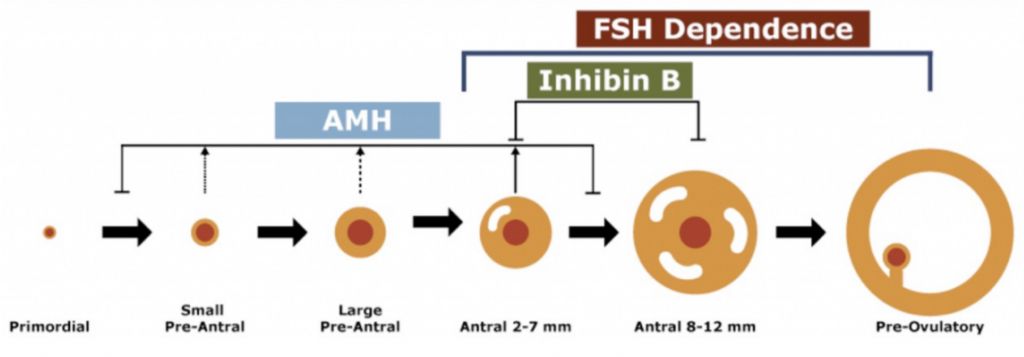
/vc_column_text]
WHAT DOES AMH AND FSH HAVE TO DO WITH EACH OTHER?
- The more AMH you have the less FSH you need to produce a good egg. This is a good thing.
- The less AMH you have the more FSH you need to produce an egg. This is a bad thing.
- Healthy AMH scores vary from country to country but they all agree the closer you get to 0 the harder it is for your body to produce a fertilizable egg.
- Normal AMH levels are 1.96 ng/ml or 14 pmol/l.
What is the significance of FSH levels?
- Normal levels of FSH are below 10 IU/L – only when measured in day 3 of your menstrual cycle.
- FSH can naturally rise up to 100 IU/L before ovulation. Day 3 FSH is the standard for comparison – not any other day.
- FSH levels above 16 IU/L on day 3 means that IVF just will not work. This is because IVF injection are mostly synthesized FSH, and there is no benefit adding more FSH when the body has too much already. Read more here.
See the research
Compare changes in AMH levels and pregnancy rates from over 300 clients.
WHAT YOU NEED TO KNOW
New mothers in their 40’s are becoming more common. Falling pregnant in your 40’s is harder than in your 20’s, yet the desire for children comes at different ages. There are some critical things you should know to help you fall pregnant in your 40’s. Learn about getting pregnant naturally after 40.
Low AMH is no the end to your fertility; it is a problem to overcome. Low AMH levels are a big problem for IVF…they don’t have to be your problem too. Here are 10 things you should know right now.
Visiting your doctor is the first port of call for most people when sick. Today the idea that “If my doctor can’t help me, then no-one can,” is standard for many people.

